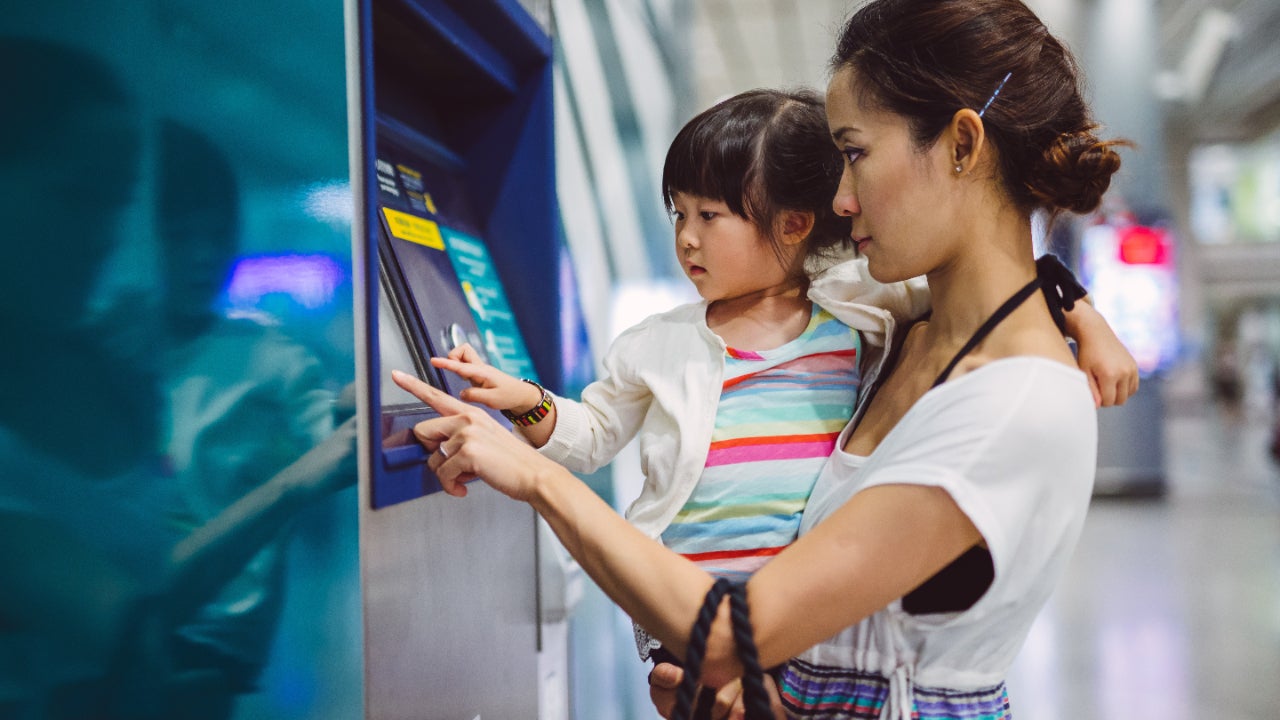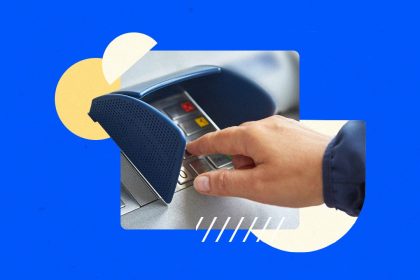Images By Tang Ming Tung/Getty Images
Bitcoin ATMs offer a convenient way for people to buy — and in some cases, sell — Bitcoin using cash or a debit card. They don’t connect to a bank account; instead, they transfer cryptocurrency to a digital wallet.
Whether you’re purchasing Bitcoin for yourself or sending it to someone else, Bitcoin ATMs are designed to make cryptocurrency transactions easier, though there are some trade-offs, especially as it pertains to fees. And buyers beware: Scams are common in the cryptocurrency space.
Here’s everything you need to know about Bitcoin ATMs.
Key takeaways
- Bitcoin ATMs are widely available, but they charge significantly higher fees than online exchanges.
- Some Bitcoin ATMs only allow you to purchase cryptocurrency, though some are bidirectional, allowing you to also sell or send Bitcoin.
- Bitcoin ATMs can be targeted by scammers, though, so it’s crucial that you only send funds to trusted recipients.
What are Bitcoin ATMs?
Bitcoin ATMs, sometimes referred to as BTMs, are kiosks where customers can buy and sometimes also sell Bitcoin, a type of cryptocurrency. Bitcoin ATMs are owned and operated by third-party companies — two large networks are Bitcoin Depot and Coinflip.
To use a Bitcoin ATM, customers need a digital wallet where the cryptocurrency can be sent. If you already have one, you can simply insert cash or a debit card to exchange your traditional currency for Bitcoin currency.
Cryptocurrency (including Bitcoin) isn’t connected to a bank account and is entirely virtual, utilizing blockchain technology. That means that when currency is exchanged at a Bitcoin ATM, it does not appear in a bank account or as cash, but rather it is transferred into a separate, digital Bitcoin wallet.
Bitcoin ATMs can be located using the Bitcoin website.
How does a Bitcoin ATM work?
At a Bitcoin ATM, you use traditional currency to purchase Bitcoin. And some Bitcoin ATMs are bidirectional, meaning you can use them to both purchase and sell Bitcoin. In the latter case, you can enter the amount of Bitcoin you’d like to exchange for cash, and collect the cash or have it deposited onto your debit card.
Bitcoin ATMs can also be used to send Bitcoin to another person. Instead of entering your crypto wallet address, you enter the wallet address of the person you’d like to send the Bitcoin to, and then the Bitcoin you purchase will be deposited into their wallet.
Benefits and risks of Bitcoin ATMs
Benefits:
- Ease of access: Because cryptocurrency isn’t tied to a central system, anyone can buy or trade it, regardless of whether they have a bank account. The widespread availability of Bitcoin ATMs make it easy to buy (or sell) Bitcoin by trading in cash.
- Privacy: Bitcoin ATMs often don’t involve sharing your personal information, though in some cases they require you to scan an ID before completing a transaction.
- Ability to sell Bitcoin: Some Bitcoin ATMs come with bidirectional functionality, so customers can also use them to sell Bitcoin.
Risks:
- Lack of cryptocurrency options: Typically, Bitcoin ATMs only allow you to trade cash in for Bitcoin. If you’re looking to buy other types of cryptocurrency, you’ll likely need to go to an online crypto exchange.
- Frequent target for scams: One of the downsides to the anonymity and accessibility of Bitcoin ATMs is that they can easily be taken advantage of by scammers and fraudsters. In fact, consumers reported losing over $110 million to scammers in 2023, and more than $65 million in the first six months of 2024, according to Federal Trade Commission (FTC) data. If someone falls for a scam using a Bitcoin ATM, it’s especially difficult to track down the scammer and recover funds. These scams typically occur when another party — typically pretending to be a business or the government — messages or calls a Bitcoin holder, demanding that they transfer Bitcoin to their wallet for some reason. As a rule of thumb, remember that real businesses and government agencies won’t ask for payment in Bitcoin.
- Lack of protection: Bitcoin and other cryptocurrencies aren’t regulated by the federal government. That means that when you get Bitcoin from a Bitcoin ATM and add it to your digital wallet, it’s not insured by the Federal Deposit Insurance Corp. (FDIC), as it would be in a bank account.
Bitcoin ATM fees
Bitcoin ATM fees can be significantly higher than those charged by online cryptocurrency exchanges. These fees typically range between approximately 5 percent to 20 percent of the transaction amount, depending on the machine, the operator and whether you’re buying or selling Bitcoin. In contrast, it’s easy to find online cryptocurrency exchanges with transaction fees of less than 1 percent.
How to use a Bitcoin ATM
To use a Bitcoin ATM:
- Prepare your wallet: Before using a Bitcoin ATM, you’ll need a cryptocurrency wallet. This is where the Bitcoin will be stored, as it’s not connected to a traditional bank account.
- Verify your identity (if required): Depending on the machine and the amount of the transaction, you may need to scan a form of ID or take a picture of it to comply with regulations.
- Choose your transaction type: Most Bitcoin ATMs allow you to purchase Bitcoin, and some are bidirectional, meaning you can also sell it or send it to someone else.
- Insert cash: To buy Bitcoin, insert cash or your debit card to exchange into the ATM. The machine will calculate how much Bitcoin that amount is worth based on the current market rate and any fees.
- Enter wallet address: Scan your wallet’s QR code or manually enter the wallet address so the ATM knows where to send the purchased Bitcoin. If you’re sending Bitcoin to someone else, enter their wallet address instead.
- Receive Bitcoin: After processing, the Bitcoin will be deposited into the wallet address you provided.
- Selling Bitcoin (if available): Enter the amount you’d like to sell, and that amount to the ATM’s wallet address, and once confirmed, the machine will dispense cash or deposit it into your card.
Bottom line
If you’re interested in trading in traditional currency to buy Bitcoin — or selling Bitcoin you already have — Bitcoin ATMs could be a convenient way to do so. They can be found across the U.S. What’s more, you don’t need to share any bank account information to use them. All that’s required is a cryptocurrency wallet.
Look out for the fees these ATMs charge, though, which can be high. It’s also important to be wary of scammers, who often take advantage of the decentralized nature of Bitcoin ATMs. Finally, make sure you only send money to those you know and trust.
Bitcoin ATM FAQs
Read the full article here





